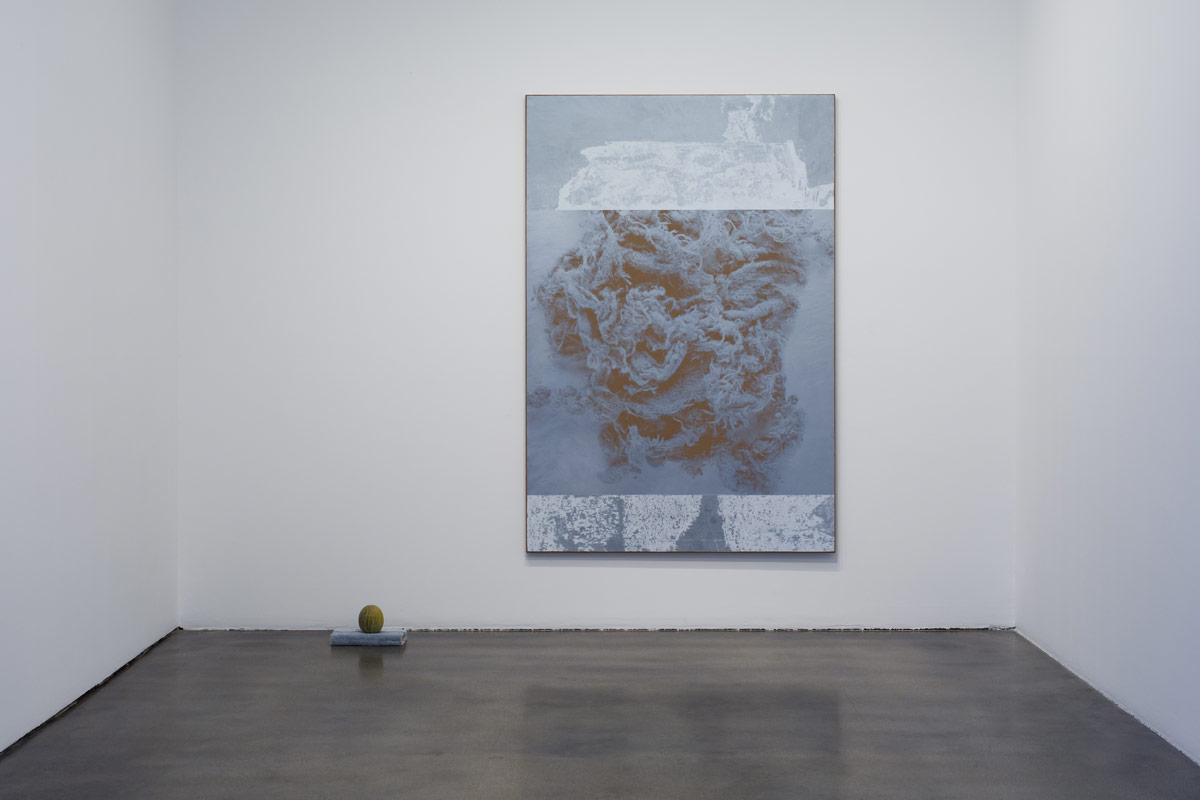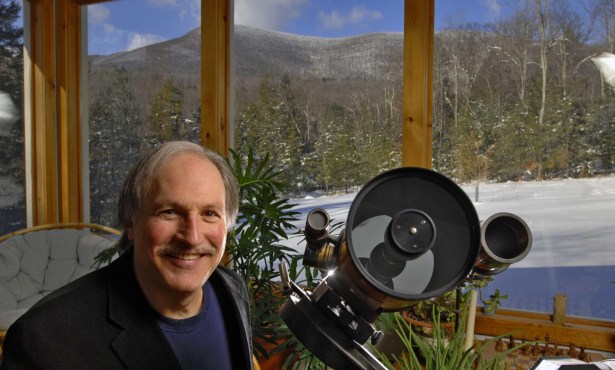N. Dash at MCASB
Artist Creates Minimalistic Beauty

The solo exhibition by New York–based artist N. Dash that’s currently on view at the Museum of Contemporary Art, Santa Barbara, registers first as an experience of minimalistic beauty. Large paintings hang in carefully calibrated dialogue, and as one moves through the space, two distinct types emerge. Some are geometric abstractions, often involving two panels joined by a third substance such as Styrofoam or cardboard. The others derive from photographs of cloudy fabric sculptures magnified to many times their original dimensions. Most of the works are executed in a restrained palette of grays, whites, greens, and blues, with the exception of a single recent painting in bright orange and a drawing from the artist’s Commuter series of the same hue. There are no labels on the walls, and the majority of the works, all of which date from 2018 and 2019, are untitled.
The plot thickens when one understands how the images of the fabric sculptures came about. Art historians use the word “facture” to describe the processes that artists employ to create paintings. Facture typically refers to ways of applying paint — with brushes for sure, but also a variety of other tools, ranging from palette knives, spray cans, and spatulas to the sticks that allowed Jackson Pollock to drip paint onto his floor-mounted canvases.
When it comes to facture, N. Dash represents something unique. The artist carries small pieces of cloth at all times and kneads them constantly. This “recurrent manual manipulation” continues until the individual fragment achieves what the artist considers to be an appropriate state of semi-disintegration. It’s these bits of string or cloth that are then photographed and enlarged before being screen printed onto an adobe ground. For an ongoing series of works on paper titled Commuter, Dash touched and folded pieces of paper until they reached the desired state of frayed readiness, then saturated each piece with a single intense color before affixing it to the wall, unframed and unstretched.
The effect of the show multiplies upon encountering the knowledge of its unique facture. The large geometric abstractions invite closer scrutiny, attention that in turn reveals the presence of other substances imbued with tangible references to the body and the earth. Adobe gathered in northern New Mexico mixes with the pigment in several works, adding both surface texture and a reference to the ground beneath one’s feet, now transferred to the wall for consideration. The magnifications, too, act as devices to force questions about materiality, and about the role of the gesture in painting. Is the weathering of a fragment of cloth, seen at this scale and in this form, fundamentally different from the brushstroke or merely another version of it?
Once observed in the facture of a single painting, this principle of the displacement of materials proliferates. A pair of large white vertical panels in a work from 2019 are joined by a stack of salvaged cardboard corner protectors. Jute, linen, graphite, and agricultural netting all belong in the artist’s hybrid lexicon of culturally determined materials. Together they form a complete set of meaningful units, each contributing to the totality of reference.
The more time one spends examining and analyzing this fascinating exhibition, the more the work returns that investment as insight and aesthetic experience. Dash’s approach is at once rigorously self-aware and profoundly personal, shocking to received notions of art and yet fully engaged by the canon of abstraction in painting. The ordinary associations we have with crumpling — consumption, waste, the last step before discarding — are reversed. Dash crumples to create, not to destroy.



